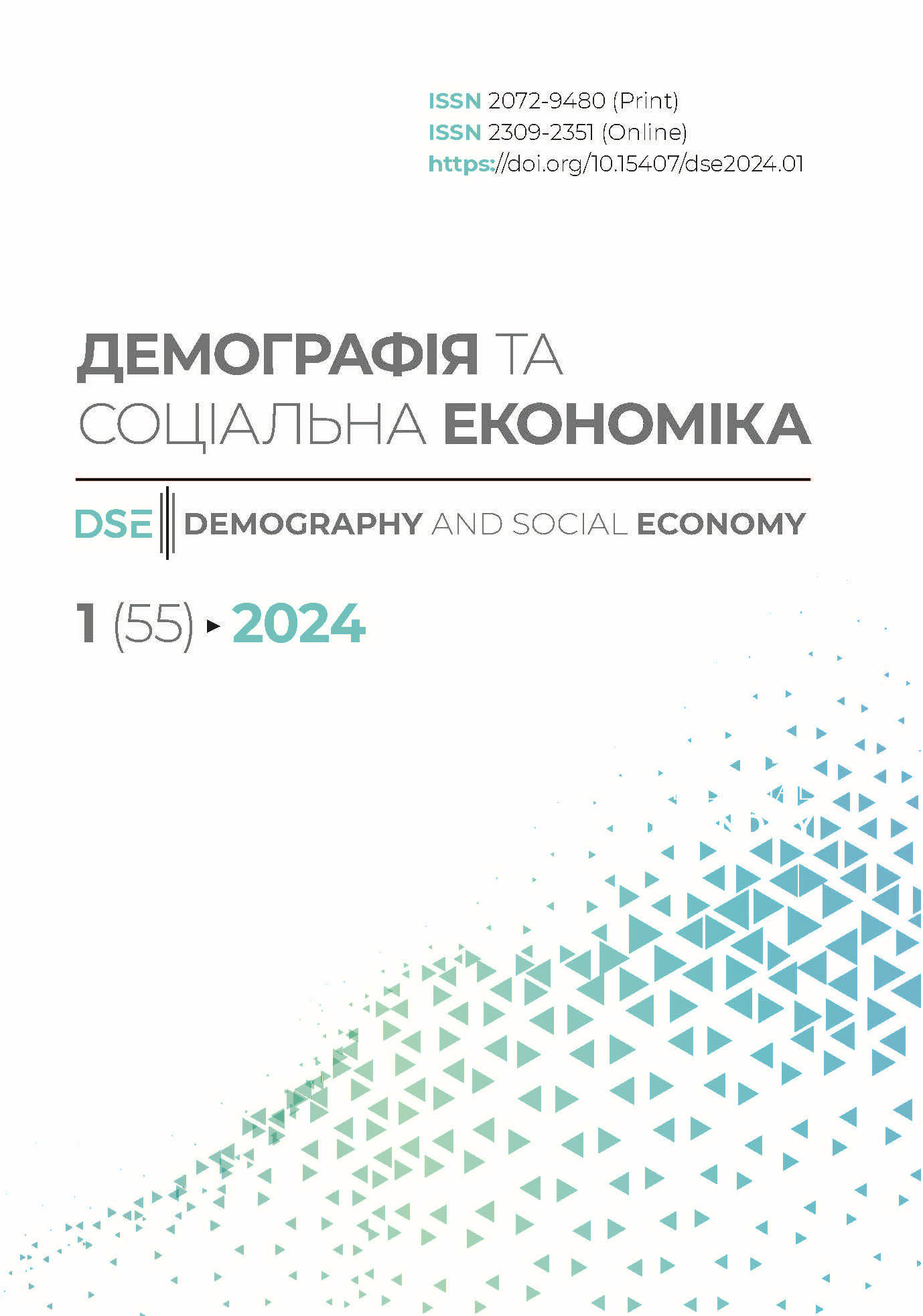USAGE OF BIG DATA FOR INFORMATION SUPPORT OF THE LABOR MARKET
DOI:
https://doi.org/10.15407/dse2024.01.133Keywords:
big data, labor market, web scraping, parsing, employment, trends, vacancies, demandAbstract
The challenges of collecting current labor market data amidst global changes and geopolitical fluctuations increasingly necessitate new approaches and alternative methods of data collection and analysis. This highlights the relevance of research aimed at developing and adapting labor market information provision methods to contemporary challenges. A promising approach in this context is the use of Big Data for labor market assessment, which involves collecting information from sources such as online job search and vacancy portals. This method allows for a deeper analysis of market trends and provides a more accurate and timely assessment of labor market needs and opportunities. The aim of this article is to discuss approaches to developing labor market information systems using Big Data, particularly online data from job vacancy websites. It examines the use of Big Data in labor market analysis based on a database containing over four million job vacancies posted on Ukrainian job search portals over the last five years, provided by the European Training Foundation (ETF). The effectiveness of these approaches in facilitating job search for all interested parties is evaluated, particularly through providing insights into the dynamics of supply and demand in the labor market based on data from these portals. The opportunities and limitations of using Big Data in this context are analyzed, including their impact on employment policy development and labor market planning. The potential benefits of Big Data in providing deeper and more accurate market condition analyses are outlined, along with technical aspects and challenges associated with their processing and interpretation. The article examines methodological approaches to data collection and analytical processing in the context of accelerated transformations, volatility, and limited access to traditional information resources. The scientific novelty of the article lies in the substantiation of the feasibility and appropriateness of using open data from online job portals for labor market information provision under current conditions. In conducting the research, methods of analysis, synthesis, and generalization were applied to identify the main contemporary issues of labor market information provision in Ukraine. The effectiveness of data collection methods based on web scraping and parsing techniques was evaluated, as well as the use of the integrated Snowflake platform to identify key trends and patterns in the labor market. The conclusions summarize the main points and substantiate directions for further research, highlighting the significance of Big Data in developing employment strategies and optimizing the labor market.
REFERENCES
- Mashey, J. R. (1999). Big data and the next wave of {InfraStress} problems, solutions, opportunities. 1999 USENIX annual technical conference (USENIX ATC 99). https://static. usenix.org/event/usenix99/invited_talks/mashey.pdf
- Sarioglo, V., & Ogay, M. (2023). Approach to population estimation in Ukraine using mobile operators’ data. Statistics in Transition new series, 24 (1), 131—144. https: // doi:10.59170/stattrans-2023-008
- Chetty, R., & Hendren, N. (2015). The impacts of neighborhoods on intergenerational mobility: Childhood exposure effects and county-level estimates. Harvard University and NBER, 133 (3), 14—16. https://doi.org/10.1093/qje/qjy006
- Sarioglo, V., & Cymbal, O. (2020). Labour market landscaping Ukraine. Big Data for labour market intelligence, 29 р.
- Vaccarino, A. (2020). Big Data For Labour Market Information (Lmi) In Ukraine. Methodological overview and analytics insights on Ukrainian Web Labour Market Working Paper, 6—33. https://www.etf.europa.eu/sites/default/files/2021-05/ukraine_ big_data_lmi_analysis_2020_web.pdf
- Vaccarino, A. (2020). Big Data For Labour Market Information (Lmi) In Tunisia. Methodological overview and Analytics insights on Tunisian Web Labour Market. Working Paper, 11—30. https://www.etf.europa.eu/sites/default/files/2021-05/tunisia_ big_data_lmi_analysis_2020_web.pdf
- Boughzala, M. (2020). Big Data for labour market intelligence. Web labour market of Tunisia. Landscaping and brief overview, 3—6. https://www.etf.europa.eu/sites/default/ f iles/2020-11/big_data_lmi_tunisia_landscaping_ojv_sources_2020_web.pdf
- Dusi, S., Graziani, C., Mezzanzanica, M., & Pelucchi, M. (2019). Informal Employment: Can Big Data Improve Knowledge on This Phenomenon? Assessing Informal Employment and Skills Needs, 197—230. Rainer Hampp Verlag. https://doi.org/10.5771/ 9783957103598-197
- Giambona, F., Khalawi, A., Buzzigoli, L., Grassini, L., & Martelli, C. (2021). Big data analysis and labour market: an analysis of Italian online job vacancies data. ASA 2021 Statistics and Information Systems for Policy Evaluation: book of short papers of the on-site conference, Vol. 132, 117—120. Firenze University Press. https://doi.org/10.36253/978-88-5518-461-8.22
- Official XML Path Language (XPath) Library (2023). https://www.w3.org/TR/ xpath-10/
- Official library of the Python language (2023). https://docs.python.org/3/faq/library. html
- Thapelo, T. S., Namoshe, M., Matsebe, O., Motshegwa, T., & Bopape, M.-J. M. (2021). SASSCAL WebSAPI: A Web Scraping Application Programming Interface to Support Access to SASSCAL’s Weather Data. Data Science Journal, 20, 5. https: // doi.org/10.5334/ dsj-2021-024
-
Chamberlin, D. D., & Boyce, R. F. (1974). SEQUEL: A Structured English Query Language. Proceedings of the 1974 ACM SIGFIDET (Now SIGMOD) Workshop on Data Description, Access and Control (SIGFIDET’ 74), ACM Press, Ann Harbor, 249—264. https://s3.us. cloud-object-storage.appdomain.cloud/res-files/2705-sequel-1974.pdf
Downloads
Published
How to Cite
Issue
Section
License
Copyright (c) 2024 Mykhailo Rozbytskyi

This work is licensed under a Creative Commons Attribution-NonCommercial-NoDerivatives 4.0 International License.


